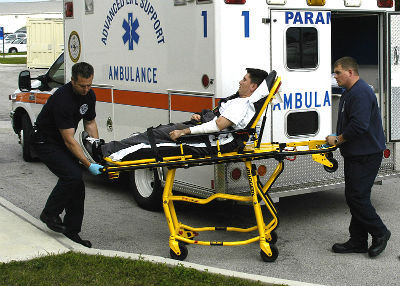Emergency Medical Services Jobs Continue to Grow
Emergency Medical Services Careers
The healthcare industry is now providing a growing number of career opportunities. Among them, emergency medical services (EMS) jobs pay well and are critical in emergency medical incidents such as accidents, heart attacks, and strokes, yet they don’t require eight years and hundreds of thousands of dollars in medical school expenses to qualify.

EMS providers are responsible for administering immediate medical care and transporting patients to the nearest medical facilities by first response ambulance. While working in high-pressure environments, providers have to maintain exacting performance and a high degree of compassion towards patients. Based on the scope of practice and depth of treatment, emergency medical careers are divided into emergency medical technicians (EMT) and paramedics.
The Difference between an EMT and a Paramedic
TGCCCC’s overview on emergency medical services programs explains the difference between an EMT and a paramedic. In short, a paramedic is generally an advanced EMT: An EMT requires 120 to 160 hours of training, while a paramedic needs a two-year program, and thus has a broader scope of practice. For example, while a basic EMT is restricted to using oxygen, glucose, asthma inhalers, and similar treatments, a paramedic can use 30-40 medications and perform more advanced treatment to support breathing. Sometimes, you must become an EMT before you can start paramedic training.
As the highest level of EMS provider, paramedic incomes average $40,000 annually, but they can earn up to $70,000 a year. That’s compared to $33,000 and $51,000 respectively for an EMT. The amount of training, the depth of medical treatment, and pay rate are good factors to help you decide whether you would like to pursue an EMT or paramedic career.
EMT/Paramedic Education and Job Placement
Formal training and state licenses are required to practice emergency medical services. TGCCCC member colleges offer three progressive levels of training: EMT basic, EMT intermediate and EMT advanced level for Paramedics (EMT-P). These programs will equip you with the necessary knowledge and skills to provide quick reactions and competent care to save lives in emergency medical settings. In addition to medical coursework, a student will get hands-on training to attain strong reasoning skills – to assess the patient’s condition and overall situation; communication skills – to effectively assist patients in distress and communicate with emergency rooms; and stress tolerance – to maintain your focus despite potentially disturbing scenes.
Regarding job placement, EMT and paramedic jobs are expected to grow by 23% through 2020, much faster than the average of all jobs, according to the Bureau of Labor Statistics. Among all opportunities, first response ambulance service is the most popular choice for both EMTs and paramedics. However, there are other employment options to consider. Air ambulances, which are used to rescue major incident victims, often require one paramedic along with a nurse or doctor. Industrial safety, fire service and park rangers are also required to be at least an ETM or paramedic certified. There are also opportunities for military medics and overseas paramedics – working in an army or in another country offer a number of unique benefits.
While dealing with many distressing situations, EMTs and paramedics often find their work rewarding because they are able to save lives from the brink of death. If you are considering an EMS career, please contact our TGCCCC member colleges for available programs in your area of the Houston/Gulf Coast region.
